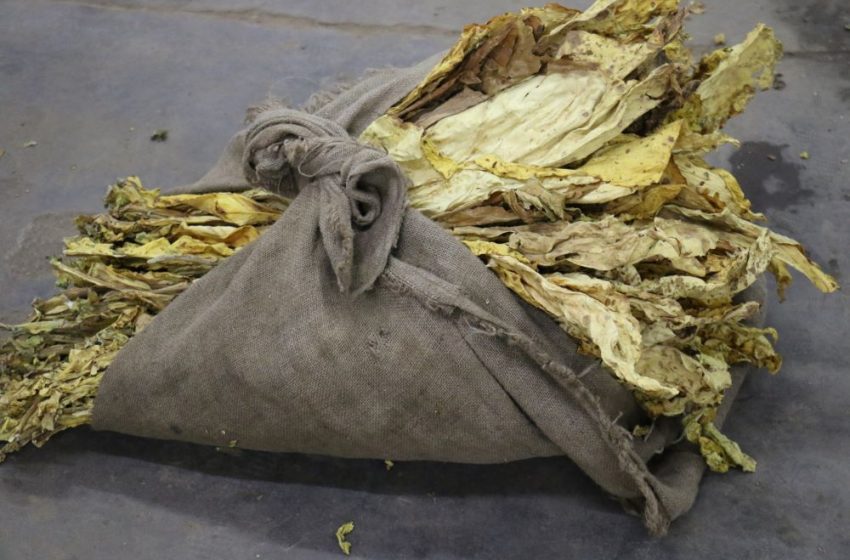A Mixed Bag
- Also in TR Leaf Print Edition
- July 1, 2023
- 0
- 10 minutes read

Image: Taco Tuinstra

Growers continue to struggle with rising production cost, but demand for tobacco remains firm.
By Stefanie Rossel

Challenges abound for the global leaf sector, but there are also opportunities for tobacco farmers, Ivan Genov, manager of tobacco industry analysis at the International Tobacco Growers Association (ITGA), told participants in the organization’s recent regional meeting in Salta, Argentina.
The ITGA recently completed a survey among growers and other stakeholders. “The rising cost of production was consistently put as the primary economic concern in the Americas, Africa, Asia, Europe as well as the Middle East regions,” Genov told Tobacco Reporter. “This dynamic is accelerating and has been particularly worrying in the last two to three marketing seasons. The situation is made worse by other underlying factors, including inflation, price rises of key commodities and growing international tensions, making even more challenging the navigation in global supply chains. All these factors contribute to bringing up the general costs of living and create a natural obstacle in tobacco production.”
In Brazil, for example, the cost of production increased by more than 30 percent on an annual basis; in Zimbabwe, it was more than 20 percent. In most of the leading tobacco producing and exporting countries, the cost of production has been growing at double-digit figures, according to Genov.
In addition, Russia’s invasion of Ukraine has impacted the availability and pricing of fertilizers. “The war in Ukraine, along with the massive humanitarian disaster, is also highly problematic in the wider agricultural aspect,” said Genov. “A lot of African and lower income markets are highly dependent on agrifood commodities imported from Russia and Ukraine; wheat was highlighted by the United Nations in the beginning of the conflict. The war has created a shortage of fertilizers as well as a spike in pricing as alternative production routes have to be exploited—often much farther away. This adds to the rising costs of production.”
Worsening U.S.-China relations, meanwhile, could result in more trade barriers for leaf tobacco and other commodities. Inflation pressures, meanwhile, have added to the general expectation of a prolonged period of crisis. There is consensus that cigarette consumption has peaked and is now declining in line with tobacco in the long term. Novel alternatives such as heated-tobacco products contain less tobacco per stick than traditional cigarettes, whereas e-cigarettes require no tobacco at all. The EU Supply Chain Due Diligence Act will bring about more requirements in each step of the production process.

Resilient Farmers
Despite these challenges, there are still opportunities for tobacco growers, the survey showed. Since late 2020, leaf has been in undersupply worldwide—an issue that is openly discussed by leaf merchants and international manufacturers. “Some of them have the lowest uncommitted inventories in their recent histories,” said Genov. “The case around burley is particularly relevant. For example, the 2022 crop in Malawi—one of the key markets for the variety—was very short. As a result, we believe it is natural to expect growth in pricing that goes above the cost of production increases [see “Back to Normal,” Tobacco Reporter, June 2023]. The alternative is to see further drops in the global tobacco growers base as cultivating the crop will become even more challenging. We have to remember that this happens on top of issues with generational continuation and the move away from rural areas by young people.”
Stable producers who are well prepared for the underlying threats will enjoy demand for their products, according to Genov. “A lot of tobacco growers have been in the business for several generations,” he said. “A great number of them have a well-diversified land, stable channels and partners for their inputs and huge experience in planning. In the face of leaf shortage and high demand, this surely means quality production is very likely to be realized. Unfortunately, in some cases, diversification is not as easy. It is not only about time and financing but the opportunities of the market. In certain countries, tobacco is the best bet. Small-scale farmers are often left with the least support; they do not have the capacity and time to safeguard against all threats. This is why support from all stakeholders in the sector is essential. Small-scale farmers must not be treated as suppliers of low-price production only.”
Most tobacco farmers are exceptionally resilient, Genov stated. “They have worked in a regulations-heavy environment for decades. Nevertheless, it is still essential to receive support and real understanding from local and international authorities and to be included in the conversations that decide their futures. In addition, tobacco growers’ needs are often not dissimilar to those farmers caring about other field crops.”
Support Needed
According to Genov, one way to assist growers is through diversification efforts, especially in the markets that are heavily dependent on tobacco. Unfortunately, he said, the World Health Organization’s Framework Convention on Tobacco Control (FCTC) Article 17, which urges member states to find viable alternatives for tobacco growers, has delivered few tangible results on this front. ITGA has put Article 17 at the center of its efforts in 2023 to ensure that the issue is taken seriously during the Conference of the Parties to the FCTC in Panama later this year. The organization urges stakeholders to remember that the livelihoods of millions of people depend on tobacco growers.
Tobacco growing countries will also need assistance with issues such as deforestation, which has been a big problem, especially in Africa. “Finding and financing alternative fuel sources that are more environmentally sustainable is critical,” said Genov. “There are some projects being run in this area. Last November, ITGA organized an awareness bringing campaign about deforestation in three of the leading tobacco growing regions in Zimbabwe. We are pressing ahead with expanding the project to other regions by the end of the year.”
One of the areas that should be prioritized is water management, according to the results of the ITGA’s survey. “For example, in Brazil, one of the key international leaf markets, there is low water storage capacity,” said Genov. “Water conservation is going to climb on the agenda in the years to come. If we include the urgent social issues that are often faced by tobacco growers, like poverty, lack of opportunity for the youth, child labor and inadequate healthcare, we can see that the sector still needs a lot of attention.”
Increasingly, tobacco growers have to cope with the consequences of climate change, which makes it harder to plan agricultural activities. “This makes services like insurance and the importance of forward planning even more significant,” Genov stressed. While weather variations can always be expected, there were some abnormal events in the last few seasons: “In 2022, Malawi was hit by Cyclones Gombe and Anna while Cyclone Mandous affected the crop in Andhra Pradesh in India. In the Americas, certain origins, like in the Dominican Republic, report changes in the traditional rainy season while in Europe, there were periods of prolonged drought. In Cuba, arguably the most striking example, Hurricane Ian obliterated the crop used to produce premium cigars.”
Cost of Production
In his presentation, Genov also reviewed global leaf production, citing data from Universal Leaf. Driven by increases in the U.S., Brazil and Zimbabwe, flue-cured Virginia (FCV) rebounded slightly, to 1.73 billion kg, in 2021. In 2022, the FCV crop excluding China was again short, down to 1.64 billion kg. Brazil’s season, for instance, finished last year with 60 million kg less than in 2021. For 2023, leading markets are expected to increase production, which could lead to increased supply at the global level, Genov said.
In Zimbabwe, production fell by 3 percent in 2022 to just over 200 million kg but was still higher than expected due to drought and the late rains improving the crop. The cost of production rose faster than tobacco prices, however, and is likely to continue increasing next year. “Farmers’ viability over the last two years has been significantly reduced,” said Genov. “In future, pricing will remain a crucial element in seeing which farmers stick with tobacco and which will move entirely to other crops. It is interesting to note here that Zimbabwe’s government has an ambitious target to stimulate production to 300 million kg by 2025 [see Tobacco Reporter’s special report on the Tobacco Value Chain Transformation Plan in May 2023]. Given the current progress of the market, this seems highly unlikely.”
In the U.S., production cost put severe pressure on growers who are increasingly turning to other commodities. “Labor, energy and fertilizer cost will flag this particularly,” said Genov. “2022 has been said to be the most expensive crop to be grown in U.S. history.” For 2023, U.S. producers expect increasing demand with no relief in cost of production, Genov said, and it appears that China is back on the market.
In China, meanwhile, tobacco production has been growing exponentially. The FCV crop reached an estimated 1.91 billion kg in 2022 and is expected to increase to 2 billion kg this year. Tobacco imports overcame their Covid-related drop of 2020 in 2021, according to Genov, who expects demand to remain strong based on local consumption patterns.
Burley production decreased from 407 million kg in 2021 to 360 million kg in 2022. The crop is anticipated to bounce back to 460 million kg in 2023.
Oriental production dropped from 154 million kg in 2020 to 119 million kg in 2021 and stagnated in 2022 at 117 million kg. Production of dark air-cured slightly increased from 108 million kg in 2021 to 113 million kg one year on. For the two latter crops, there is no estimate for 2023 yet.


